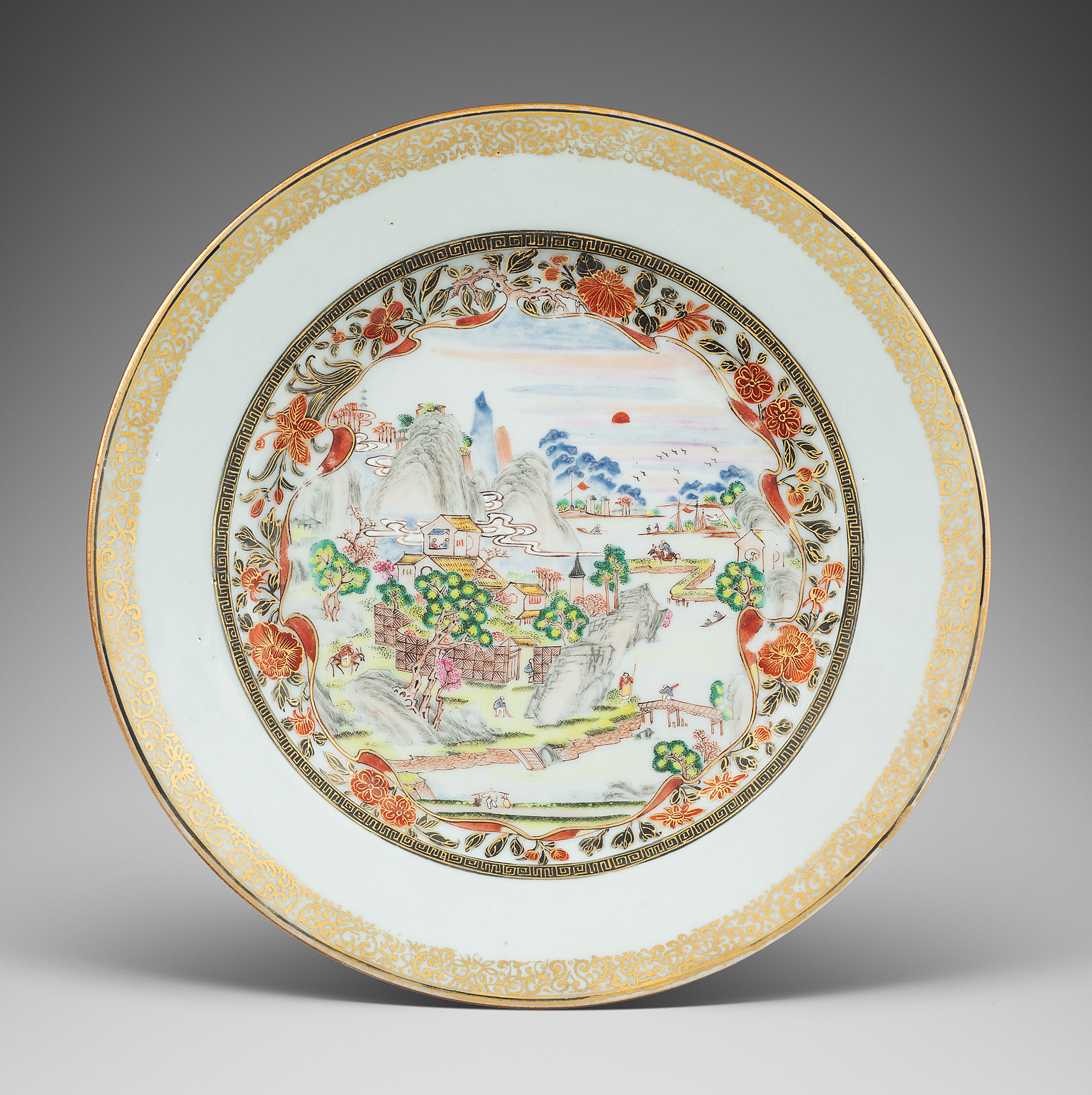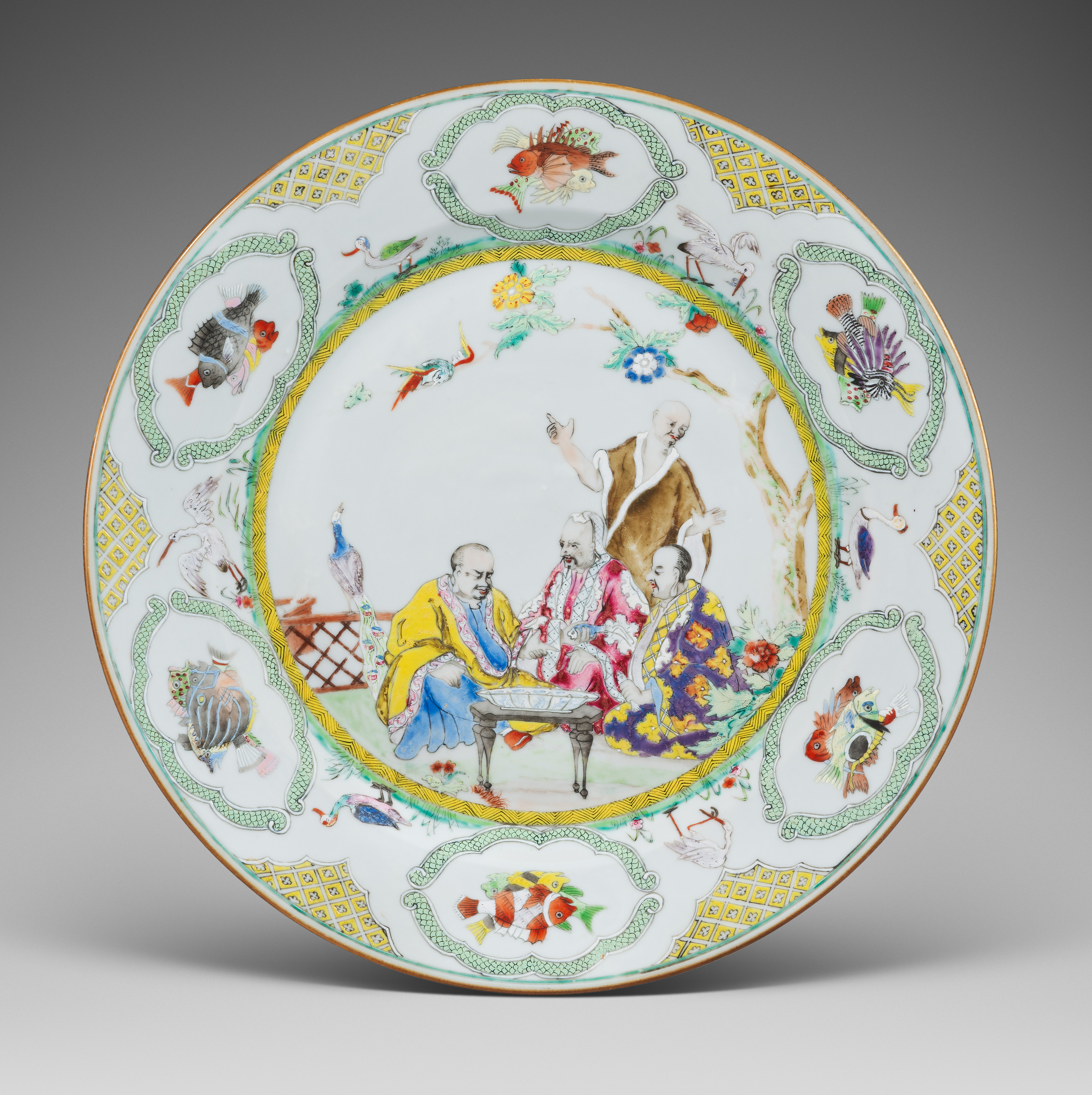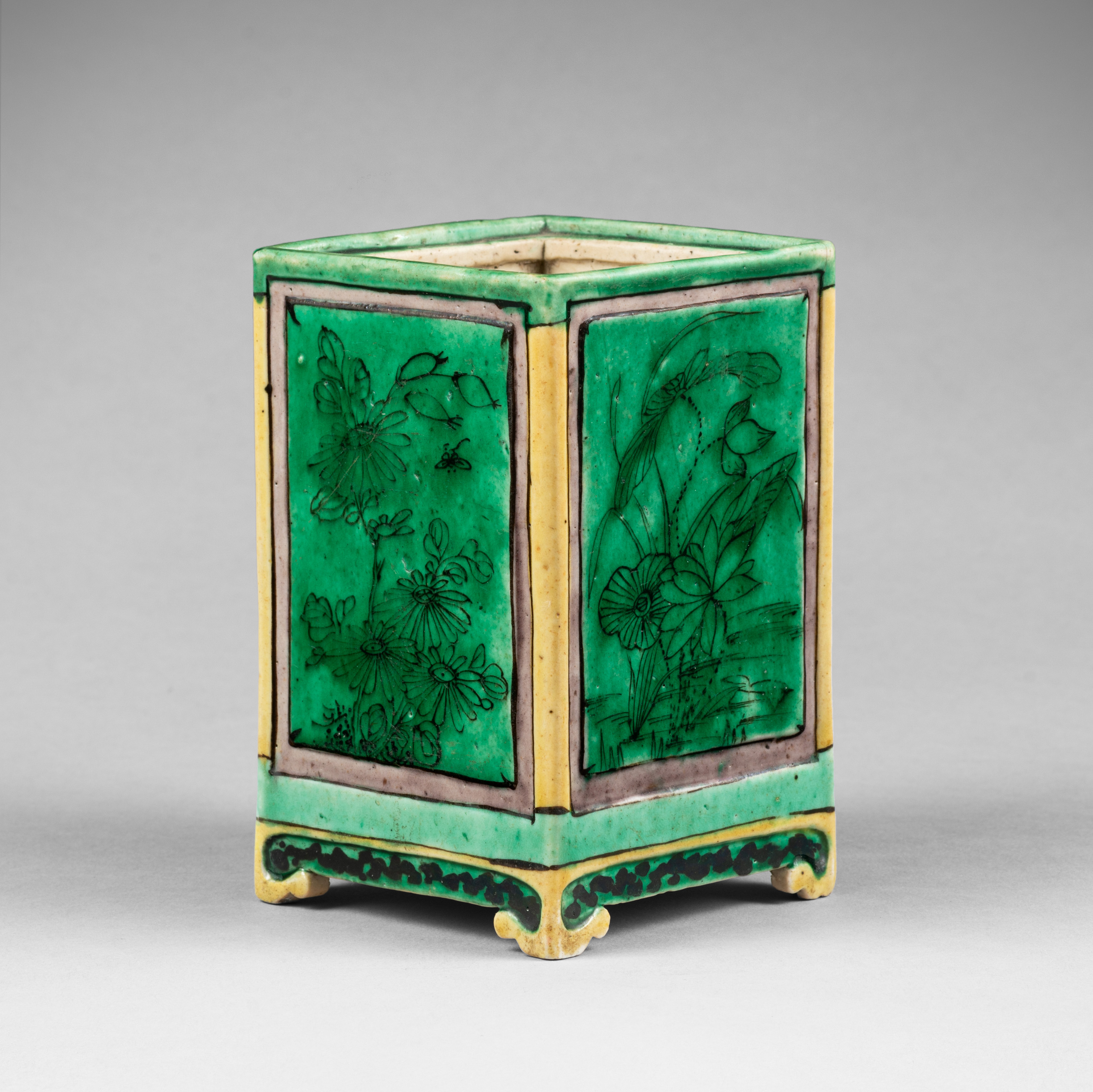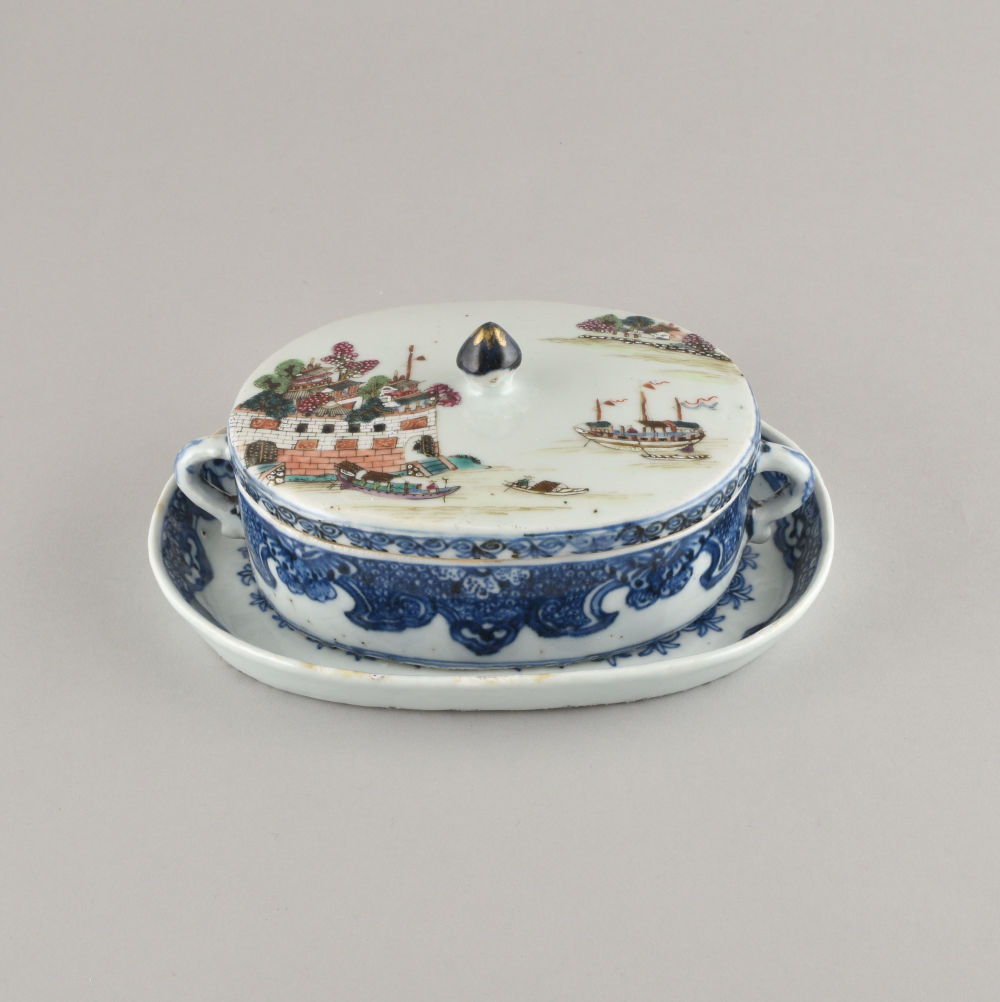
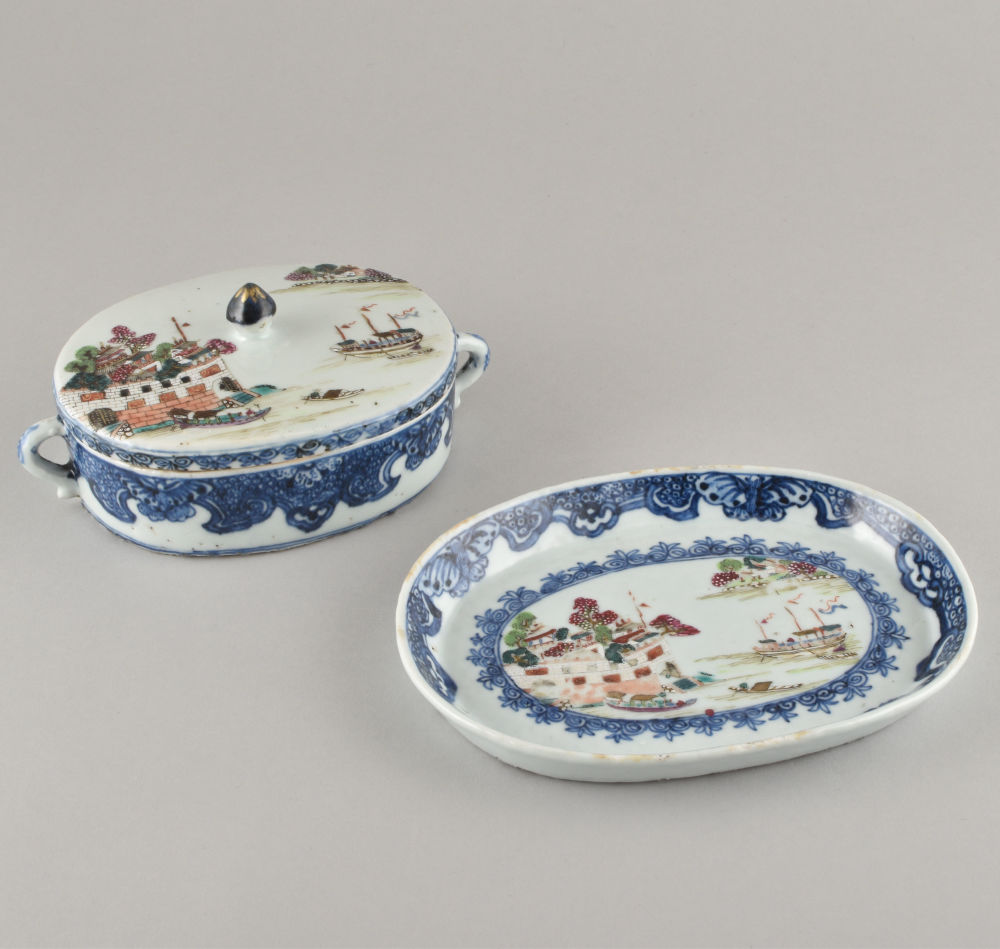
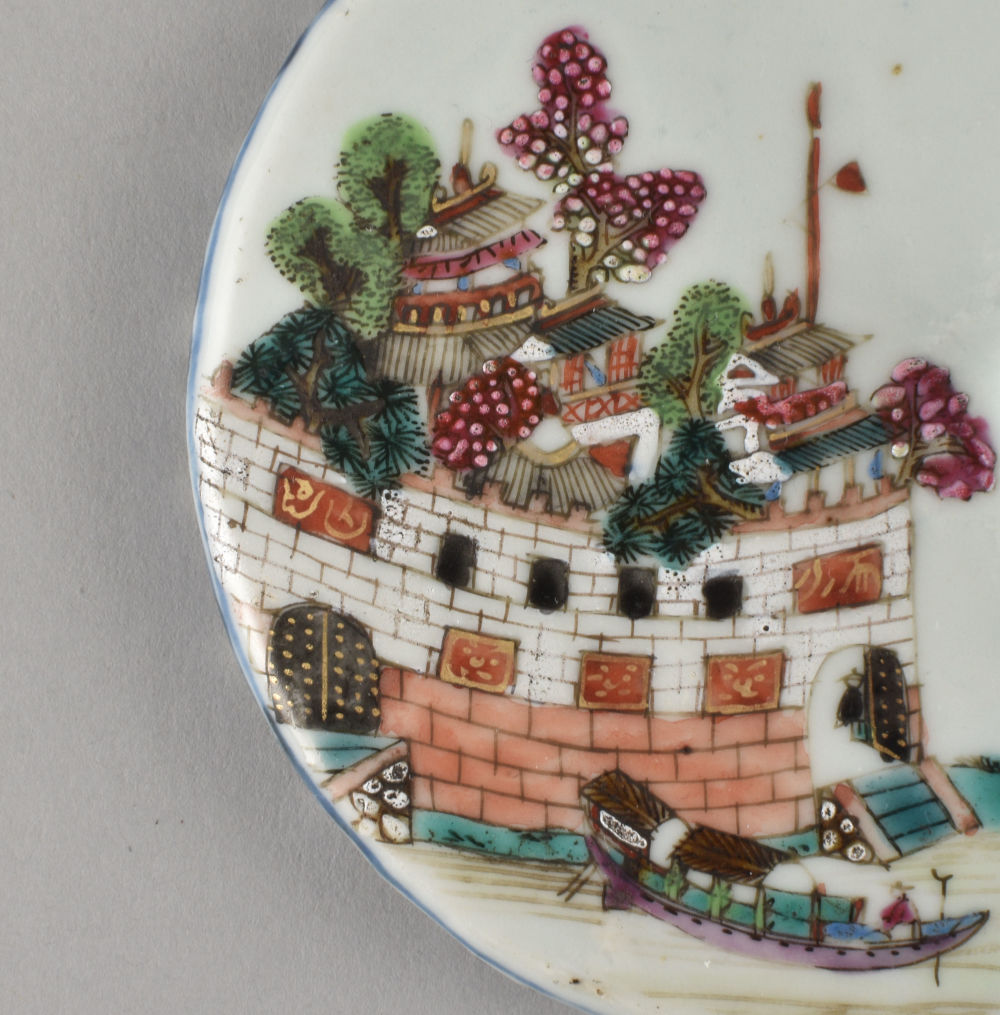
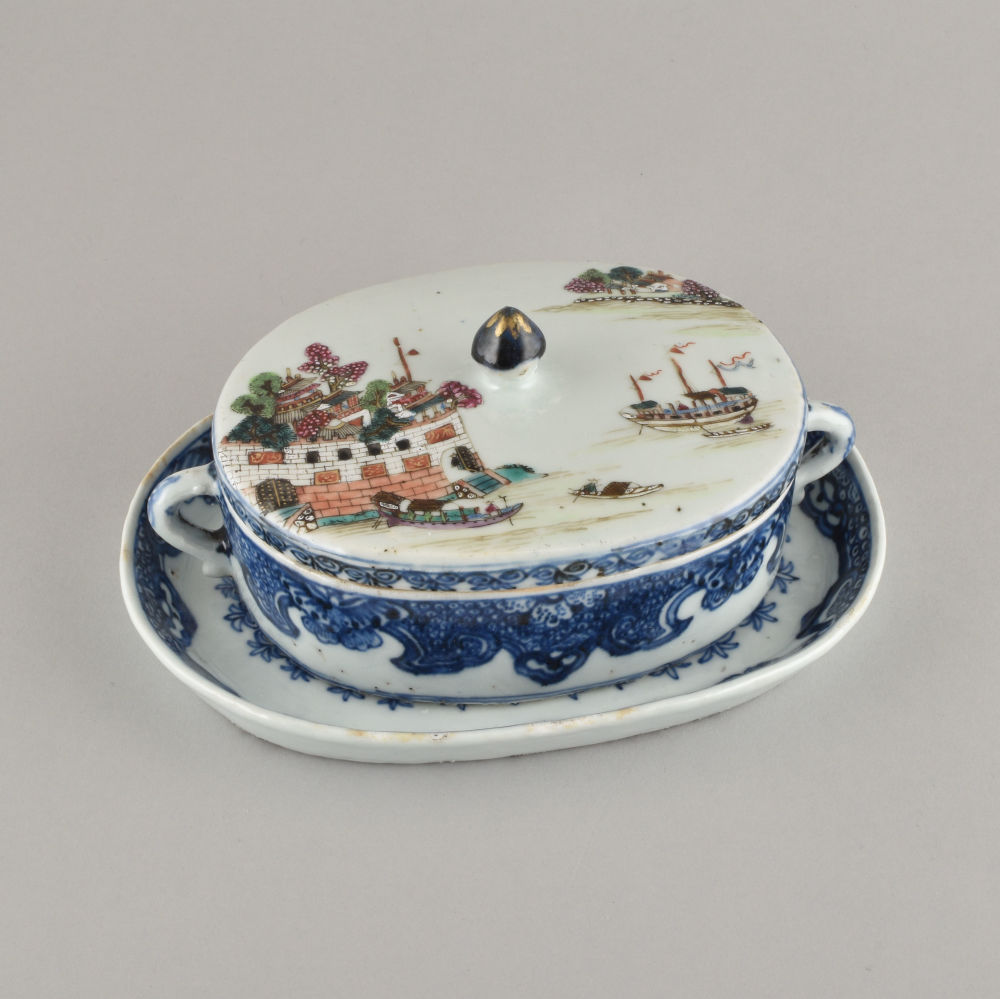
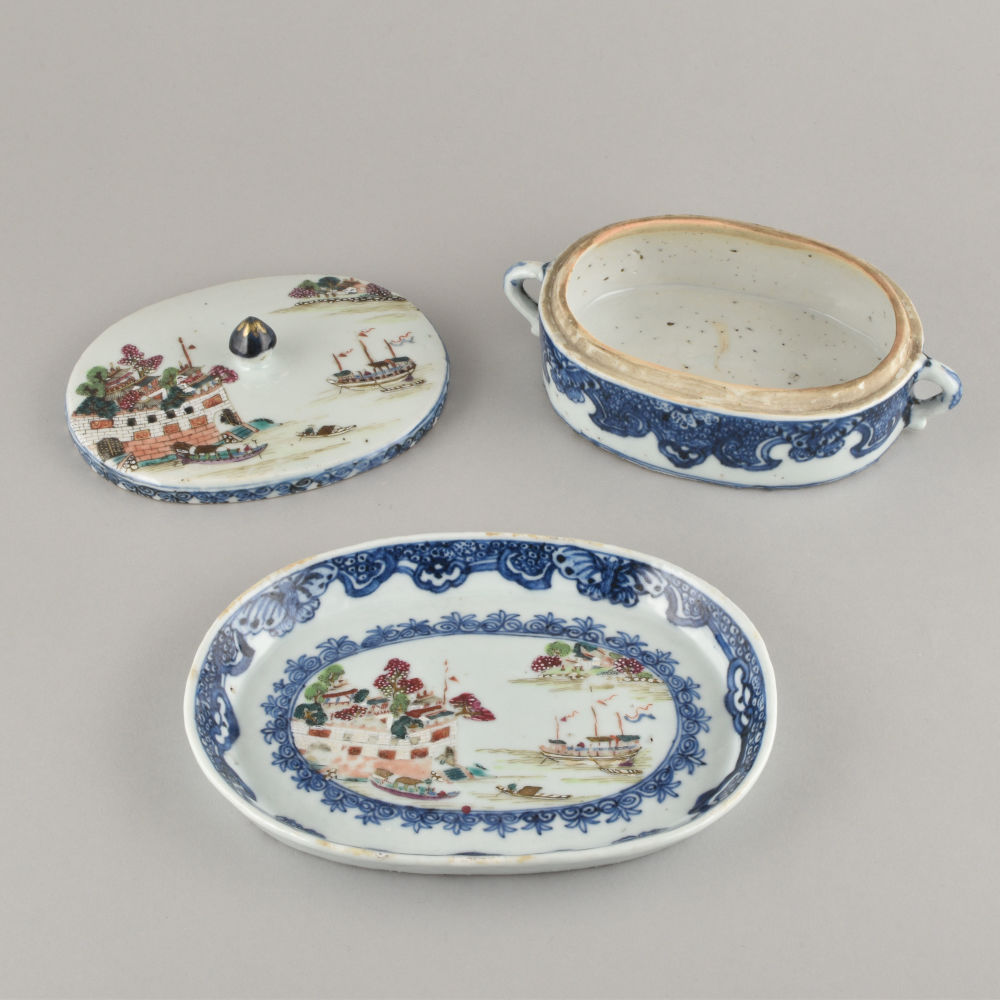
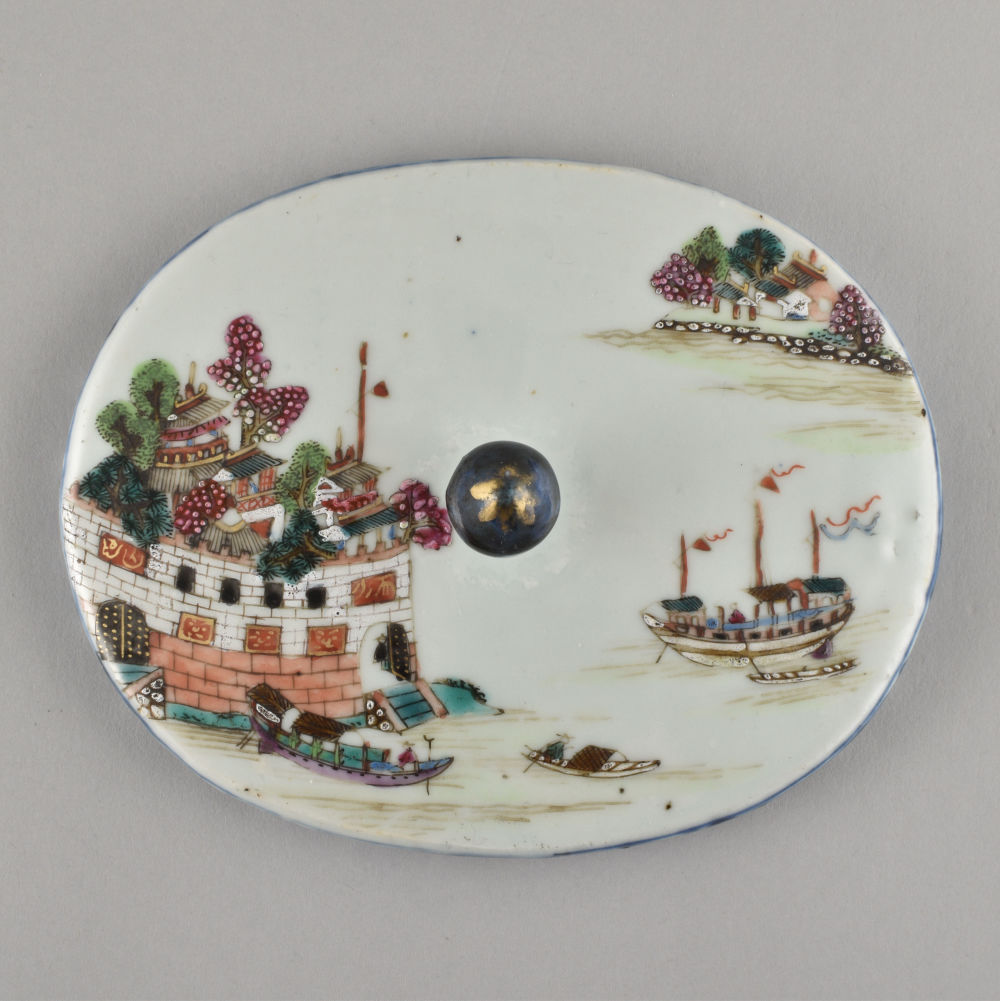
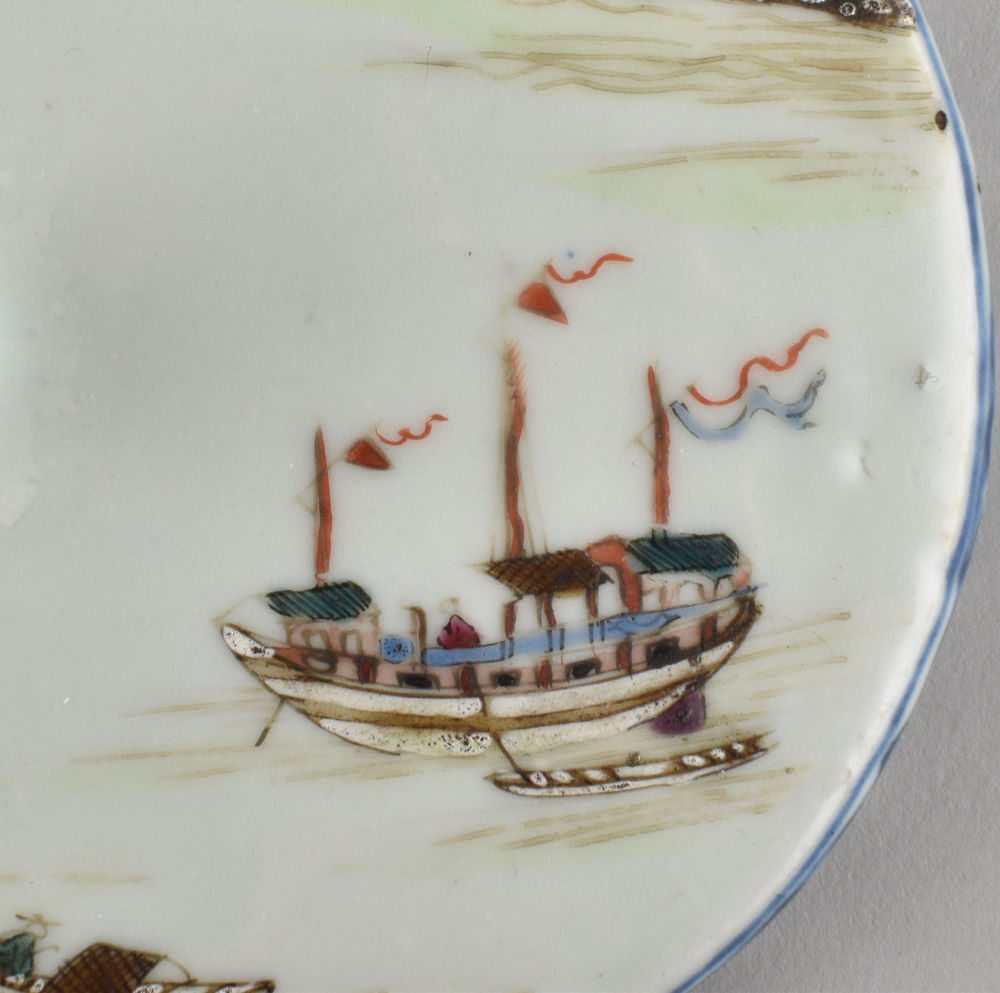
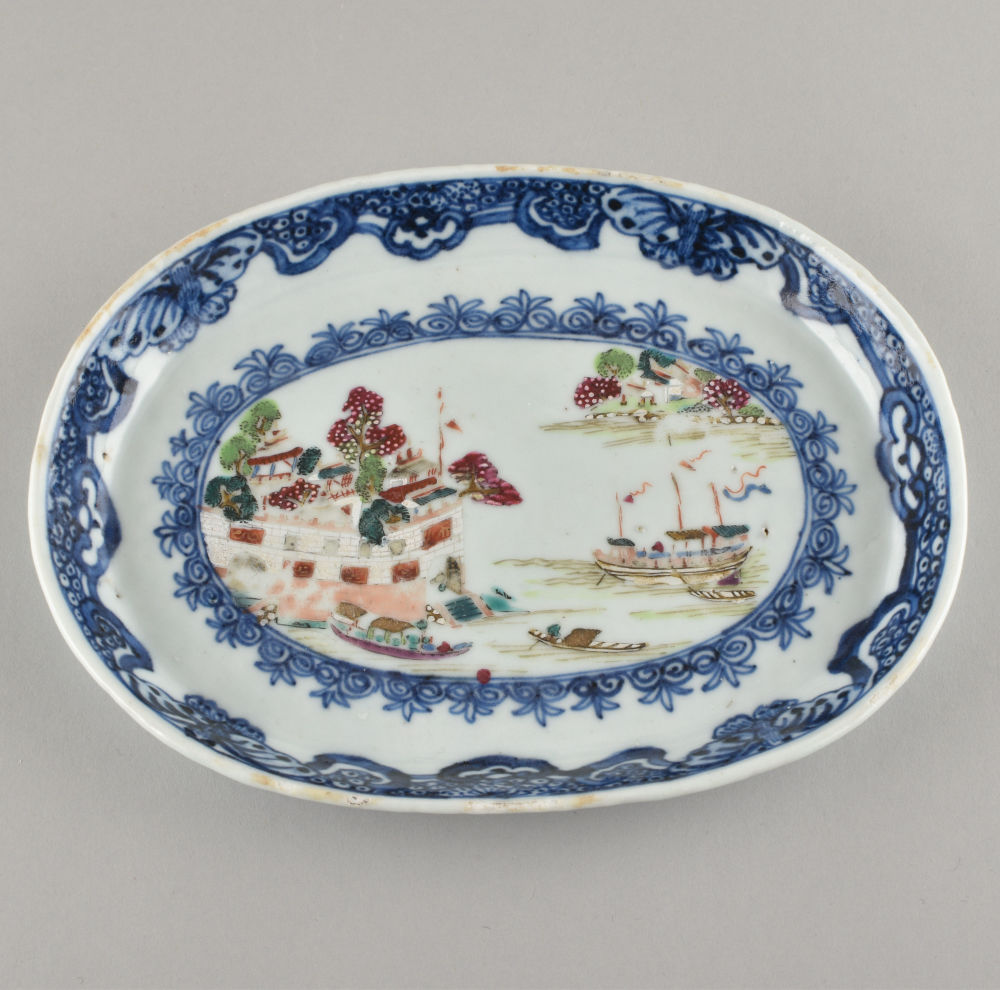
A Chinese famille rose “Dutch folly fort” butter dish and stand. Qianlong period
Painted with a view of the Dutch folly fort on the Pearl River within a scroll border in underglaze-blue, the rim with butterflies and shaped cell-patterned panels.
- Country:
- China
- Period :
- Qianlong period (1736-1795), ca. 1780
- Material:
- Porcelain
- Dimension:
- 6.88 in. / 5.11 in. (17.5 cm / 13 cm) / stand
- Reference :
- C830
- Status:
- sold
Related works
A pair of butter dishes are in the RA collection (Tome II). A plate was in the Paulo Cunha Alves Collection.
For two large blue and white meat dishes, see Luisa Vinhais & Jorge Welsh, A Time and A Place: Views and Perspectives on Chinese Export Art, 2016, no. 75.76.
For a saucer decorated in underglaze blue, see C.J.A. Jörg, Porcelain and the Dutch China Trade, 1982 The Hague, p. 70, cat. 18.
For a Chinese famille rose reticulated dish, see Christie’s NYC, The Leo & Doris Hodroff Collection , Part II, 23 january 2008, lot 405.
For a blue and white platter, see William Sargent and Rose Kerr, Treasures of Chinese Export Ceramics – From the Peabody Essex Museum, 2012, pp. 145-146, no. 52.
For a famille rose dish, see H. Hyvönenk Kiinalaista Posliinia Suomessa, Chinese Porcelain in Finland, , 1986 Finland, p. 147, cat. 262.
For a large blue and white meat dish, see John Ayers and Davis Howard, China for the West, 1978, p.207-8.
Notice
This one and other forts were defensive structures built in the Ming dynasty to protect Guangzhou (Canton). By the beginning of the Qing dynasty the advances in cannonry made them redundant and had fallen into disrepair.
They were later commandeered by foreigners – Dong Paotai (Easter Fort) by the French, and a mile away, Haizhu (Sea Pearl), by the Dutch. Thereafter, they were known as the French and the Dutch folly forts and were used for storage and as bases for the staff as the Europeans were not allowed to live in Guangzhou. The Dutch folly fort was directly opposite the city and only a half-mile from the hongs. The history of the term folly fort is unclear, but it may refer to the assumption that the structure was nonfunctional. While often mentioned by travelers, these sites were not commonly depicted by either Chinese or Western artists.
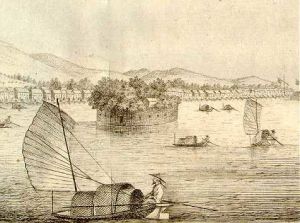
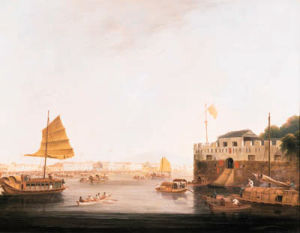
The Dutch Folly Fort and the Factories.

